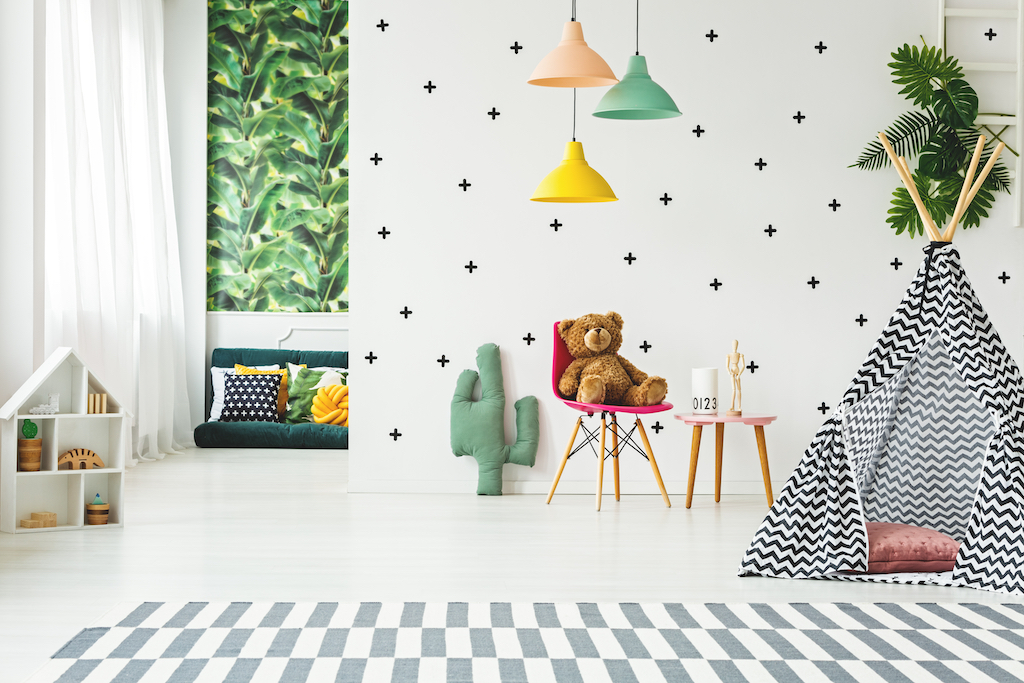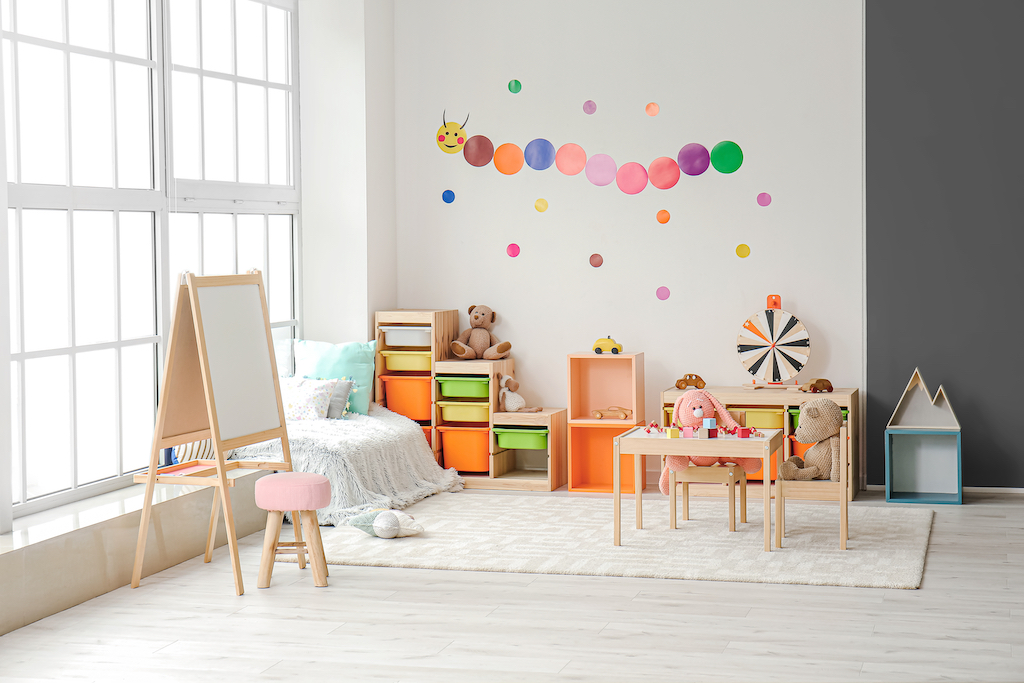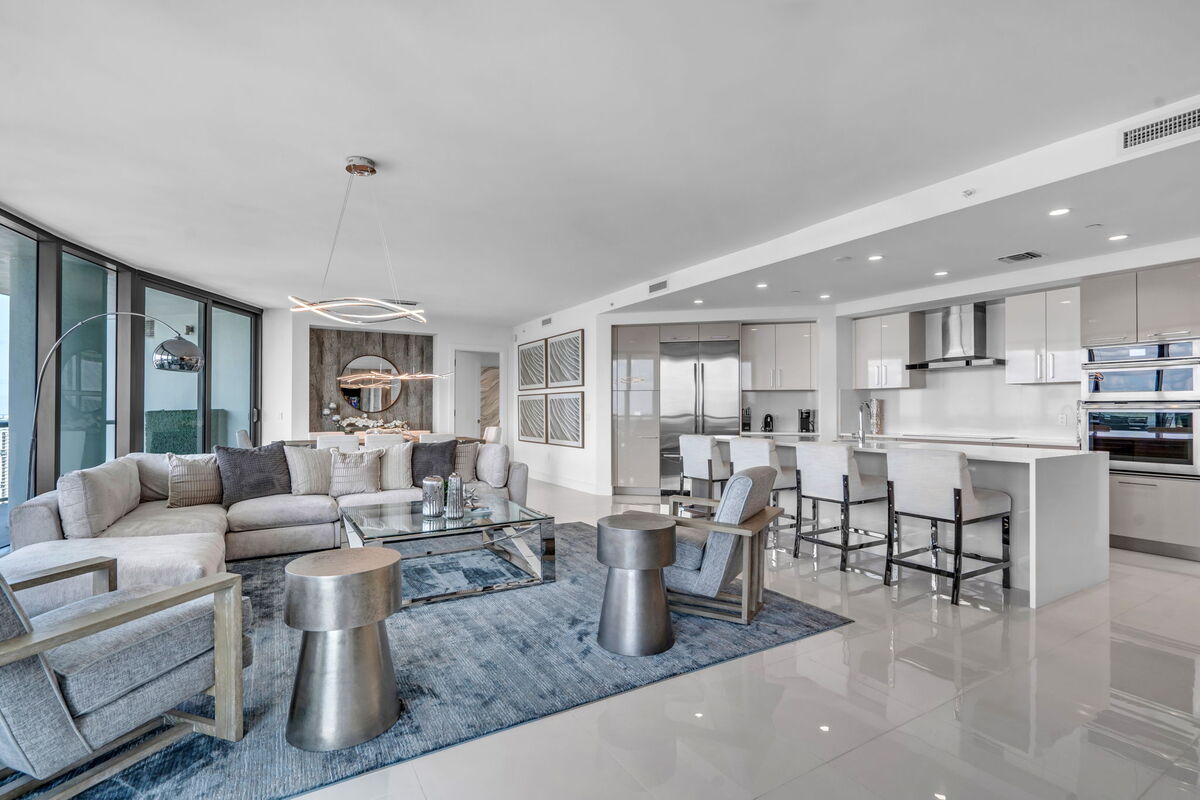 Photo Credit: Courtesy of Pixel-Shot/ Shutterstock
Photo Credit: Courtesy of Pixel-Shot/ Shutterstock
The Montessori philosophy extends its influence well beyond the classroom, touching every aspect of a child’s life, including their play spaces at home. A Montessori playroom isn’t just a designated area for children to pass the time; it’s a carefully curated environment designed to promote independence, self-directed learning, and the development of essential life skills. Let’s explore the key elements and principles that go into creating a Montessori playroom.
A Thoughtfully Prepared Environment: Designing a Space for Exploration and Discovery
The cornerstone of a Montessori playroom is the idea of a “prepared environment.” This is a space intentionally designed to facilitate learning through hands-on experiences. Every detail, from the choice of furniture to the arrangement of materials, is carefully considered to encourage exploration and discovery.
Low Shelves and Open Spaces: Promoting Independence and Accessibility
In a Montessori playroom, you’ll find low shelves and open spaces that allow children to access toys and materials independently. This design empowers them to make choices about their play and learn the value of tidying up after themselves.
Minimalism and Order: Encouraging Focus and Concentration
Montessori playrooms are characterized by minimalism and order. Fewer toys and materials are intentionally chosen and organized neatly. This approach helps children concentrate on one activity at a time and develop a sense of orderliness.
Natural Materials and Sensory Play: Exploring the Senses and the World
Materials in a Montessori playroom often include natural, sensory-rich items like wooden toys, fabric textures, and objects from nature. These materials engage a child’s senses and encourage exploration.
Practical Life Activities: Learning Through Everyday Tasks
A Montessori playroom integrates practical life activities like pouring, sorting, and cleaning. These tasks help children develop fine motor skills, independence, and an understanding of real-life processes.
 Photo Credit: Courtesy of Ground Picture/ Shutterstock
Photo Credit: Courtesy of Ground Picture/ Shutterstock
Rotating Materials: Fostering Engagement and Learning
Rather than overwhelming children with an abundance of toys, Montessori playrooms often feature a rotation system. This means periodically introducing new materials and activities to keep children engaged and curious.
Child-Centered and Freedom of Choice: Empowering Children as Decision-Makers
A fundamental principle of Montessori is allowing children to choose their activities and work at their own pace. A Montessori playroom respects a child’s autonomy and encourages them to follow their interests.
Parental Involvement as a Guide: Supporting Independent Learning
Parents play a pivotal role in a Montessori playroom. They serve as guides, observing their child’s interests and providing materials and guidance as needed, allowing their child to take charge of their learning.
A Space for Peaceful Reflection: Encouraging Calm and Mindfulness
Montessori playrooms often incorporate a space for quiet reflection, where children can read, meditate, or engage in creative activities that promote tranquility and mindfulness.
Creating a Montessori playroom is about empowering young learners to explore, discover, and develop essential life skills in an environment that respects their independence and autonomy. By following Montessori principles in this space, parents can provide their children with a strong foundation for a lifetime of learning and personal growth.





